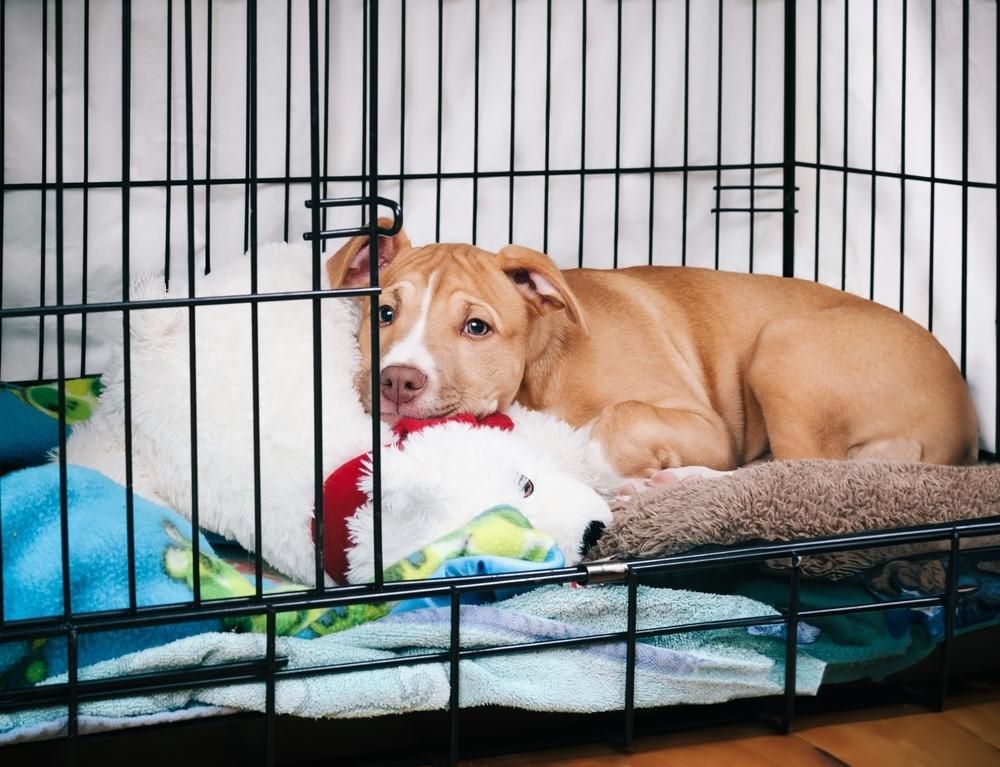

Adopting a new pet generates excitement, fun and even more love in your home. Nothing beats puppy kisses and kitten purrs. And if one furry wonder can create all that happiness, why not double your joy by adopting multiple pets? After all, puppies and kittens don't come with an "off" switch, and having an extra furry playmate can help absorb some of that energy.
While this may be true, it's important to understand littermate syndrome before adopting a pair of pets. Here's what you should know about this syndrome, the behaviors it entails and how to support the smoothest, most successful adoption process possible.
Littermate Syndrome in Dogs
Also known as littermate codependency, this term refers to a host of unwanted behaviors that can develop in puppies raised together during an important socialization period (around 3 to 14 weeks of age), sometimes lasting into adulthood. While behavior professionals don't consider it a scientific term, littermate syndrome anecdotally also develops in non-littermates of similar age who stay together during this important period.
These puppies rely so strongly on each other that they fail to properly bond with their pet parent or look to them for cues on how to respond to new stimuli. Instead, they take cues from one another. This can make it more difficult for pet parents to reinforce (desirable) or redirect (undesirable) behaviors.
Littermate Syndrome in Cats
Behavior professionals don't recognize littermate codependency in cats. In fact, many cat specialists recommend pet parents adopt pairs of similar-age kittens together. Even when cats develop behavioral issues that look similar to littermate syndrome in dogs, they're largely attributed to inappropriate or untimely socialization.

Behaviors Associated With Puppy Pair Adoptions
Puppies with littermate syndrome show some or all of the following behavioral signs:
Extreme or chronic overexcitement at a young age (under 6 months)
Intense separation behaviors when apart (refusing to eat, excessive crying)
Vigorous, nonstop play
Difficulty crate training
Resource guarding food and toys (standing over an item, barking, growling, lip curling)
Leash reactivity and pulling
Fear around new people, pets and experiences
Timidity and hiding in the more subordinate pup
Aggression or nervousness in the more dominant pup
Bullying behavior
High levels of aggression during adolescence, leading to fights
It can be easy to overlook some of these behaviors in young pups. The most concerning, high-risk behaviors can appear suddenly with little warning after 6 months of age.
Sadly, sibling adoptions that proceed to the aggressive fighting stage can rarely be fixed, even with help from behavior professionals. In those cases, the best and most humane option is usually rehoming one pup so both have a chance for a loving, rewarding home with different families.
Behaviors Associated With Kitten Pair Adoptions
Undersocialized kittens may also share behavior challenges. They may cling to their littermate like a security blanket. They may also feel more confident when able to "copy cat" a confident cat friend. Some of the most common challenges include:
Fear around new people, pets and experiences
Timidity and hiding
Difficulty separating the pair
Aggression when unable to hide or escape a perceived scary experience
Aggressive play, such as biting or clawing one another
Avoiding Littermate Syndrome
To avoid codependency syndrome in dogs, never adopt pairs of puppies near the same age. Instead, look for pairings aged at least 6 months apart. For the best possible outcome, opt for puppies of the opposite sex.
When adopting kittens, keep in mind that the prime kitten socialization period runs from ages 2 to 8 weeks. Even older kittens and cats benefit from continued positive interactions with people, places and fun experiences, like play. Socialization strengthens your bond, too.

Minimizing Unwanted Behavior in Codependent Dogs
So, what if you've already adopted a pair of littermate pups? Having well-socialized adult dogs in your household can help lead by example and show the new puppy pair the rules.
Ultimately, the goal is to establish independence in each dog so they don't rely on each other so much — and bond more strongly with you instead. That increases your chances of successful puppy raising. While you may get lucky and have few problems, you can take steps to build each pup's confidence and boost socialization and emotional health.
Crate and Basic Training
Crate training puppies or fosters for independence is key. Get your dogs used to sleeping apart in crates in different rooms (or far apart in the same room). Train the puppies separately in general, too. Scheduling one-on-one sessions helps them focus on you and the work at hand.
Feeding
Try serving your dogs' meals in their individual crates. This will help them associate their crate with positive experiences and prevent squabbles or resource guarding over food.
Playtime
Sibling pups play intensely with each other, and they typically won't have much interest in interacting with you when they're together. So, schedule time for one-on-one games. Make yourself the most fun, engaging playmate in each pup's life. Sure, let them play together, but give them plenty of opportunities to explore their world and play dynamics separately too.
Walks
Work on all the basics individually — including leashed walks. In a codependency syndrome dynamic, the less confident pup may only feel comfortable around the more assertive pup. So, walk them separately to help both dogs excel at basic obedience.
Socialization
Prioritize socializing your pups individually, as well. Invest in a puppy training class, but enroll your pups in different sessions. This will give them the chance to thrive and socialize with new dogs and people.
Making Your Adoption a Success
Adopting pairs of pets can seem like a foolproof recipe to double your fun factor, but it requires some extra consideration and care. When adopting pairs of kittens, focus on socialization to reduce behavioral challenges. To minimize the risk of behavioral problems in puppy pairs, avoid letting them hang out exclusively together and give them plenty of one-on-one time. Be prepared for the potential challenges, along with the wags and purrs, so your future pets enjoy their best lifetime of love spent with you.


















